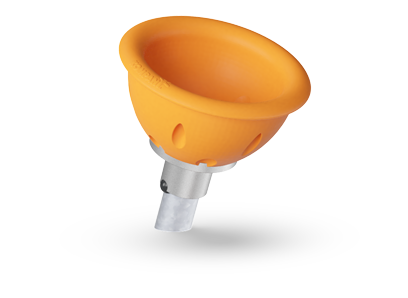
ELE400024
Spinner Bowl
- +3
4+ Years
9.8 m2
1 Users
Different playground sizes for different spaces

There is not a rule for how big or small a playground should be. It all depends on the surroundings as well as the users. If you need to accommodate a large number of children in various age groups, you might need a bigger playground to ensure enough space and play activities for all. If you are a kindergarten planning a playground for toddlers, a smaller playground can be just what you need.
Creating an ideal playground involves and understanding of various dimensions to accommodate different user needs. It is vital to understand the type of playground your area needs, to determine what size playground you should build. If the playground is too small, there might not be enough variety in play activities for everyone, and the playground can easily become overcrowded. Same goes for a larger site, which can look empty even during busy afternoons, and fail to engage children in interactive play - simply because of too much space.
This guide explores typical playground sizes, specific equipment choices, and considerations for various settings such as schools and public parks. At KOMPAN we have +50 years of experiencing planning and installing playgrounds and are happy to help and guide you in the process, so you get the right playground for your community.

Small playgrounds allow for important play activities in limited space, for example in urban areas, on rooftops, or in small community parks. These playgrounds are usually between 50 and 150 square meters. Despite their size, they can still offer a variety of play activities with thoughtful design and multifunctional equipment.
Smaller playgrounds are more cost-effective, both in terms of construction and maintenance. A smaller area is easier to monitor for nurseries and kindergartens. In smaller areas such as housing associations and urban areas, a small playground can be an accessible place for children in the city to have fun. A smaller playground often caters to a specific age group, so if your playground needs to accommodate a larger age group, you may need a larger playground with more play equipment.
Examples of equipment: Compact play structures, small slides, swings and climbing walls.
User capacity: Suitable for up to 20 children

Medium-sized playgrounds offer a balance between a variety of play activities without requiring too much space. They typically range from approximately 150 to 300 square meters. They are common in suburban areas, schoolyards, and larger community parks.
Medium playgrounds can support a wide range of equipment, providing diverse play experiences that cater to different age groups and interests. These playgrounds can comfortably accommodate a moderate number of children, reducing the likelihood of overcrowding and ensuring that each child has sufficient space to play. The size allows for creative and flexible playground designs and can accommodate different play zones, like a climbing area and a calmer area with sensory playground equipment. While more expensive than small playgrounds, medium playgrounds offer a good balance between cost and the amount of play value they provide.
Example of Equipment to choose: Larger play structures, multiple slides, swings, merry-go-rounds, seesaws, sensory playground equipment like play panels.
User Capacity: Can accommodate 20-50 children.
Large playgrounds, ranging from 300 to 900 square meters or more, provide extensive play options and cater to a larger number of users. These playgrounds are often found in regional parks, large community centers, and school districts with extensive grounds.
Large playgrounds can support a wide variety of equipment and play activities, offering extensive play experiences that cater to all age groups and interests. With large playgrounds you have enough available space to include a multisport area or outdoor gym equipment for older children and parents. A playground of this size serves as significant community hubs, encouraging social interaction among children and their families and often becoming a central gathering place for the community.
Example of Equipment to choose: Comprehensive play structures, multiple swing sets, large slides, climbing towers, and sports courts. Include calm play areas for sensory play.
User Capacity: Suitable for 50+ children.

Get the overview of your playground equipment dimensions
Understanding the dimensions of specific playground equipment helps in designing a functional and safe play area. When adding products to your favorites, you can see the overall required area needed for the selected products. By removing or adding products to your favorites, the required area changes, which lets you adjust your plans and products for the space that you have available.
On top of that, you will find helpful drawings and DWG files on all our products, so you have all the specification you need to design the ideal playground for your space requirements.
The average size of a playground varies based on the setting. Small playgrounds range from 50 to 150 square meters, medium playgrounds from 150 to 300 square meters, and large playgrounds can be 300 to 900 square meters or more.
A good rule of thumb is to allocate 4-7 square meters per child. This ensures enough space for safe play and helps prevent overcrowding.
School Playgrounds: Typically 250 to 500 square meters.
Community Playgrounds: Usually 400 to 900 square meters or more.
Public Parks: These can vary widely, but large parks may have playgrounds of 900 square meters or more to serve a broad community.
The size of a playground is crucial for several reasons:
Cost/Budget Allocation: Larger playgrounds require a higher budget.
Design Considerations: Space influences equipment selection and layout.
Play Value/Play Capacity: Adequate space enhances the play experience.
Community Satisfaction: Meeting community needs ensures higher usage and satisfaction.